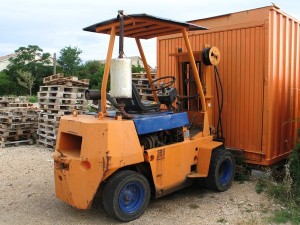
Don’t ever underestimate the importance of safety within the workplace. Too many people are injured and too many lives are lost and there is no place for anyone whether they are workers or employers to become complacent.
Especially when you are talking about workplaces like construction sites.
It is important for people to work together to make sure that everyone goes home safely at night.
Material Handling Injuries
Knowing the safety procedures that apply to material handling is essential not only for your own safety but for the safety of the workers that are around you.
Most material handling injuries that occur are because either loads or heavy equipment are not handled correctly. Materiel handling can often cause bruising, pinching as well as broken limbs when the extra heavy loads are not handled correctly.
Unsecured material that is not stored correctly can fall and cause cuts and bruises or even worse depending of the weight of the material.
Always remember that when you are lifting anything you need to lift with your legs and definitely not your back and you need to make sure that you do not twist or bend when you are carrying a heavy load in your arms.
If the material that needs to be moved is too heavy to be carried by you alone always look for assistance whether it be from a co-worker, supervisor or load lifting equipment.
Equipment such as forklifts can be ideal for lifting heavier weights but always make sure that the load is appropriate for the forklift and a trained and qualified person is operating it.
PPE (personal protective equipment) that is appropriate to the task always needs to be used. Equipment such as steel capped boots, safety belts, goggles and gloves need to be a part of your everyday work life.
When Operating Equipment
When materials are too heavy to be handled manually then one of the best options is to use appropriate heavy equipment to assist with the task. However care needs to be taken when using and type of equipment to ensure that the result isn’t an accident and subsequent injury.
Some tips for using lifting equipment:
- When using a forklift the load always needs to be centred to reduce the risk of the load tipping and dropping
- If you are moving machinery the lift needs to be on the lowest setting so that the movement can be as safe as possible
- When stacking loads always load onto the established pile in the centre before reversing away from the stack so that it does not tip and fall
Stacking Safety
Care needs to be taken when staking and the rules that you need to follow depend on the material that you are in the process of stacking. Here are some general tips that can be applied to stacking:
- If you are stacking wood it is advisable to take any screws or nails out of the wood prior to stacking
- If you are stacking by hand do not make the stacks more than 16 feet in height and if using a forklift limit the stacks to 20 feet
- Always make sure that stacks are stable and will support themselves
- All stacks and or bundles need to be secured appropriately
- Anything that may roll such as poles needs to have appropriate restraints in place. It is ideal that you store them where they can be easily accessed if it will be necessary for individual pieces to be removed
Conveyor Belt Safety
Great care also needs to be taken when using a conveyor belt for material handling. There are a number of injuries every year as a result of mishandling materials on a conveyor belt.
Here are some general tips to make using a conveyor belt safer:
- An emergency stop button should always been installed that needs to be reset after use
- The area around a conveyor belt should be kept clear of employees that are not engaged in the tasks



